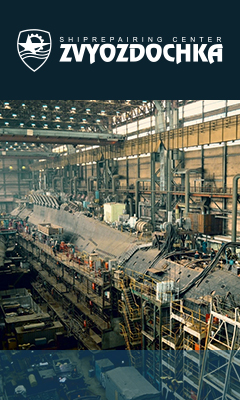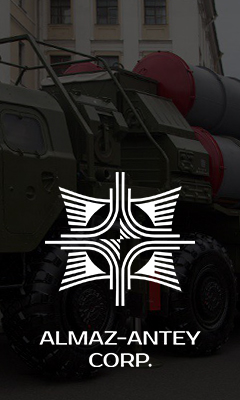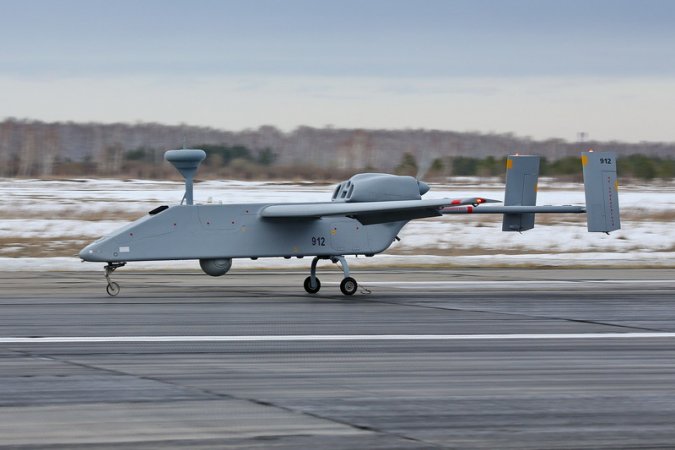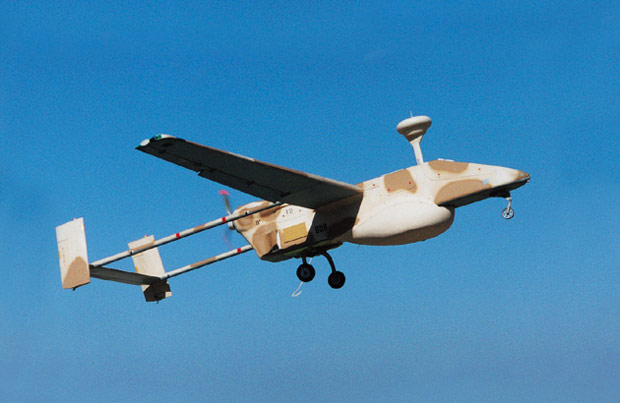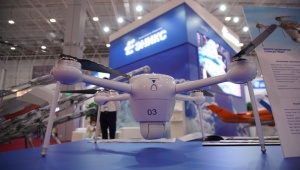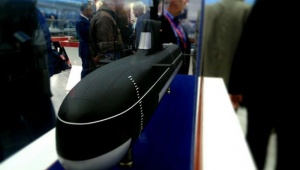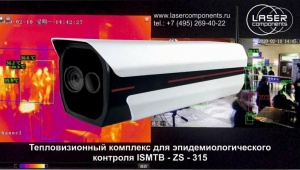The 32-kg optronic payload comprises the thermal imaging unit with cooled 3-5 micron matrix, the television unit and the laser rangefinder/illuminator HTEB.461321.011 produced by Quantum Optics.
At the same time, there is another system, GOES-540 designed by Ural Optical & Mechanical Plant.
In its annual report, Rostec corporation recognized development and delivery of this system as the key achievements of Schvabe holding in 2018.
Both payloads include the visible-band optical channel, the thermal-band channel, and the laser rangefinder. The payload can be used in the temperature range from -60°С to +55°С. The weight is somewhat 30 kg.
Vadim Badekha, CEO at Ural Works of Civil Aviation (UWCA) producing Forpost told Mil.Press about the variety of the drone’s payloads: "Forpost can operate with both optronic systems. It is up to a customer to decide which of them to apply. GOES-540 is deemed the basic one, while. GOES-4 will be an optional payload".A UAV expert Denis Fedutinov spoke positively of the UWCA’s suppliers diversification policy, when two companies produce payloads for one carrier. "The possible choice between different versions of surveillance systems for Forpost-R keeps designers on toes. First, they realize they’re not monopolists. Second, this may expand their potential client portfolio. Plus, once the project of NPP AME passes military trials, it would have not only civil application prospects".
Commenting on the Israeli-made system, the expert added that Russia had received a ‘stunted version’ of MOSP-3000 (without range measuring and target illumination equipment for guided weapons).
An informed insider from Schvabe told Mil.Press Today that the project designed by the company outperformed the previously used Israeli payload. As for him, original MOSP-3000 had excellent features in its days, but now it is outdated. "We’ve created a Russian system that meets present-day requirements to optronic reconnaissance devices. It will help to improve combat effectiveness of the upgraded Forpost", summed the interviewee.UAV Forpost is a locally-made version of Israeli drone Searcher Mk II by IAI. Initially, it was assembled of foreign components, but in 2016 UWCA set a course for import substitution.
The UWCA representatives reported about supplies of the modernized systems based on Russian-made elements early in 2017, when the company hosted defense minister Sergey Shoygu.
Late in 2017, deputy minister Yury Borisov highly appreciated the systems applied in Syria and specified that the plant had fulfilled the order of the Ministry of Trade & Industry regarding import substitution.
In December 2019, Interfax reported that the Russian UAV Forpost-R had completed the manufacturer’s trials and was preparing for the state ones.
For reference
The Russian Defense Ministry decided to import drones from Israel following the conflict in South Ossetia in 2008.
Israel refused to deliver up-to-date systems to Russia, though agreed to sell the tactical Searcher Mk II and light Bird Eye 400.
The first two tactical and ten portable drones were supplied in 2009. Further cooperation was at risk of due to the Russian-Syrian deal on the Yakhont missiles. The licensed production of Israeli UAVs in Russia was threatened, too.
The ex-director of Vega corporation told RIA Novosti that Russia was able to design home-made drones even without Israel’s assistance. As for him, the breakthrough in this industry would happen in 2012-2013.
There was no need for the breakthrough then: the contract with Israel was finally tied. Local production of Israeli UAVs was arranged at UWCA. Searcher Mk II was renamed into Forpost, and Bird Eye 400 obtained the name of Zastava.
Later on, Israel did impose the ‘drone’ sanctions against Russia anyway. In 2014, new deliveries (following the restrictions) of Israeli UAVs to Russia were .
An information about new procurements of drones leaked out in 2016, but that led to nothing. The ban was after a report of a Searcher-styled drone unknown to the Israeli (allegedly, Russian Forpost) entered their airspace from the Syrian side.
Valery Butymov
Have anything to add? Feel free to contact Mil.Press:
+7 (812) 309-8-505, ext. 102 ;











